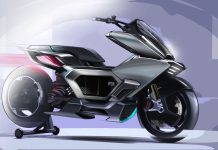2024 Car Trends
The automotive industry in 2024 is navigating a transformative landscape, marked by the rising prominence of Electric Vehicles (EVs), economic fluctuations with high-interest rates, and shifting consumer preferences towards online sales and sustainable options.
Dealers and manufacturers face challenges such as supply chain disruptions, changing market dynamics, and the need for innovative approaches in sales and marketing. As the industry adapts to these evolving conditions, understanding these trends is crucial for stakeholders to stay competitive and meet consumer demands in a rapidly changing automotive market. This analysis provides key insights into the future of the automotive industry in 2024.

Electric Vehicles Market Growth
The automotive industry in 2024 is poised to witness several transformative trends and challenges:
- Electric Vehicles (EVs) Gaining Momentum: In 2023, EV sales surged significantly, marking a 55% increase compared to the previous year. By the end of 2024, EV sales are expected to constitute about 12% of all new car sales in the U.S., with continued growth anticipated. Notably, while Tesla remains a dominant player in this segment, other automakers like Hyundai, Kia, Ford, and GM are also increasing their market share.
- Elevated Interest Rates Impacting the Market: The automotive market in 2024 is grappling with high-interest rates, which are putting pressure on both buyers and sellers. Interest rates for new cars hover around 10%, and exceed 14% for used vehicles, making monthly payments more challenging for consumers. This scenario is also affecting dealers, as increased floor plan expenses turn inventory holdings into financial burdens.
- Shift Towards Normalcy Post-Pandemic: The industry is experiencing a reversal to pre-pandemic norms. New car inventories have significantly recovered, and automakers are offering substantial sales incentives. This shift is creating a more buyer-friendly market, although the longevity of this trend into 2024 is uncertain.
- High Vehicle Costs and Changing Consumer Preferences: Despite a gradual return to normalcy, the average cost of new and used cars remains high, continuing the affordability crisis for consumers. However, increasing supply and dealer incentives are beginning to alleviate price pressures.
- Online Retail Shifts and Partnerships: A notable development is Amazon’s partnership with Hyundai to sell vehicles online, signalling a potential shift towards online automotive retail. However, this move may encounter challenges due to the complex dynamics between manufacturers and dealers.
- Economic Challenges and Market Uncertainty: The industry faces persistent inflation, an ongoing auto workers’ strike, and geopolitical conflicts, all contributing to economic slowdowns and market uncertainty. These factors are leading to a decline in consumer sentiment and rising auto loan rates, which could price out a significant portion of the potential buying market.
- Growing Demand for Pre-Owned and Hybrid Vehicles: There’s an increasing shift towards EVs, but hybrids are likely to serve as a transitional solution due to their affordability and access to EV credits. Additionally, certified pre-owned vehicles are gaining popularity as they offer a more affordable alternative to new vehicles, maintaining some level of assurance for consumers.
Auto Industry Economic Impact
Challenges and Considerations
The automotive industry in 2024 faces several challenges and considerations that need to be addressed:
- Economic Uncertainty and High-Interest Rates: The elevated interest rates for both new and used vehicles are creating financial stress for consumers and dealers. Buyers face higher monthly payments, while dealers confront increased floor plan expenses, transforming inventory holdings into financial liabilities. These economic pressures are compounded by broader economic uncertainty, including inflation and potential recession risks.
- Supply Chain and Production Issues: Persistent supply chain disruptions and production challenges, including the ongoing auto workers’ strike, are causing significant uncertainty in the market. These issues affect new vehicle incentives, and advertising strategies, and could lead to serious supply problems, impacting both new and used vehicle inventories.
- Shift Toward Online Sales and Distribution Challenges: The move towards online vehicle sales, exemplified by partnerships like Amazon and Hyundai, introduces new challenges in the traditional relationship between automakers and dealers. This shift may face resistance from dealerships and could disrupt established sales and distribution models.
- Consumer Sentiment and Spending: Consumer sentiment has been declining due to various factors such as the reintroduction of student loans and geopolitical conflicts. This decline, coupled with the looming risk of a government shutdown and rising auto loan rates, may lead to reduced consumer spending and a preference for saving over making large purchases like vehicles.
- Transition to Electric Vehicles (EVs): While EV sales are increasing, the industry faces challenges in managing this transition. Issues include developing sufficient charging infrastructure, making EVs more affordable, and addressing the lower profit margins per EV compared to internal combustion engine vehicles. There is also a need to respond to narrowing profits as EV sales grow, which may impact pricing strategies across all vehicle segments.
- Market Shifts in Vehicle Types: The demand for pre-owned and hybrid vehicles is shifting dealership strategies. Dealers may need to adapt their marketing and sales approaches to emphasize hybrids as a transitional solution and certified pre-owned vehicles as affordable alternatives to new vehicles. This shift is a response to the changing consumer preferences and market conditions.
- High Vehicle Costs: The high average cost of new and used vehicles continues to exacerbate the affordability crisis for many consumers. Although increasing supply and growing dealer incentives are beginning to ease price pressures, the overall high cost remains a significant barrier to vehicle purchases.
Consumer Preferences in the Auto Industry
Table summarizing the pros and cons of the key trends and challenges facing the automotive industry in 2024:
| Trends/Challenges | Pros | Cons |
|---|---|---|
| Economic Uncertainty and High Interest Rates | May encourage more competitive pricing and incentives from dealers.Could drive innovation in financing options. | Higher monthly payments for consumers.Increased financial burden on dealers due to soaring floor plan expenses. |
| Supply Chain and Production Issues | Potential for innovation in supply chain management.Encourages diversification of supply sources. | Disruptions leading to inventory shortages.Increased costs and production delays. |
| Shift Toward Online Sales | Expand market reach and convenience.Offers new sales and marketing opportunities. | Potential resistance from traditional dealerships.Challenges in changing established sales models. |
| Consumer Sentiment and Spending | Shift in focus to more economical and used vehicles. Opportunity for targeted marketing strategies. | Decreased overall consumer spending on vehicles.Negative impact on new vehicle sales. |
| Transition to Electric Vehicles (EVs) | Growth in a more sustainable and innovative market segment.Increasing consumer interest in EVs. | Need for significant investment in charging infrastructure.Lower profit margins per EV. |
| Market Shifts in Vehicle Types | Opportunities for sales of hybrids and pre-owned vehicles. Meets diverse consumer needs and preferences. | Dealers need to adapt quickly to changing market demands.Potential over-reliance on certain vehicle types. |
| High Vehicle Costs | High-end market segments may thrive.<br>- Encourages exploration of alternative vehicle options. | Affordability crisis for average consumers.Barrier to vehicle ownership, especially for new buyers. |
Conclusion
Addressing these challenges will require a multifaceted approach from automakers, dealers, and other stakeholders in the automotive industry. Strategies may include adapting to new sales models, investing in EV infrastructure, managing production and supply chain issues, and responding proactively to changing consumer preferences and economic conditions.
These trends indicate a period of significant transition and adaptation for the automotive industry, where technological advancements, economic factors, and changing consumer preferences will shape the market landscape in 2024.
Stay ahead in the automotive industry! Explore our comprehensive analysis of 2024’s key trends and challenges. Get the insights you need to navigate the evolving market dynamics and drive your success. Click here to learn more and take your automotive strategy to the next level



































